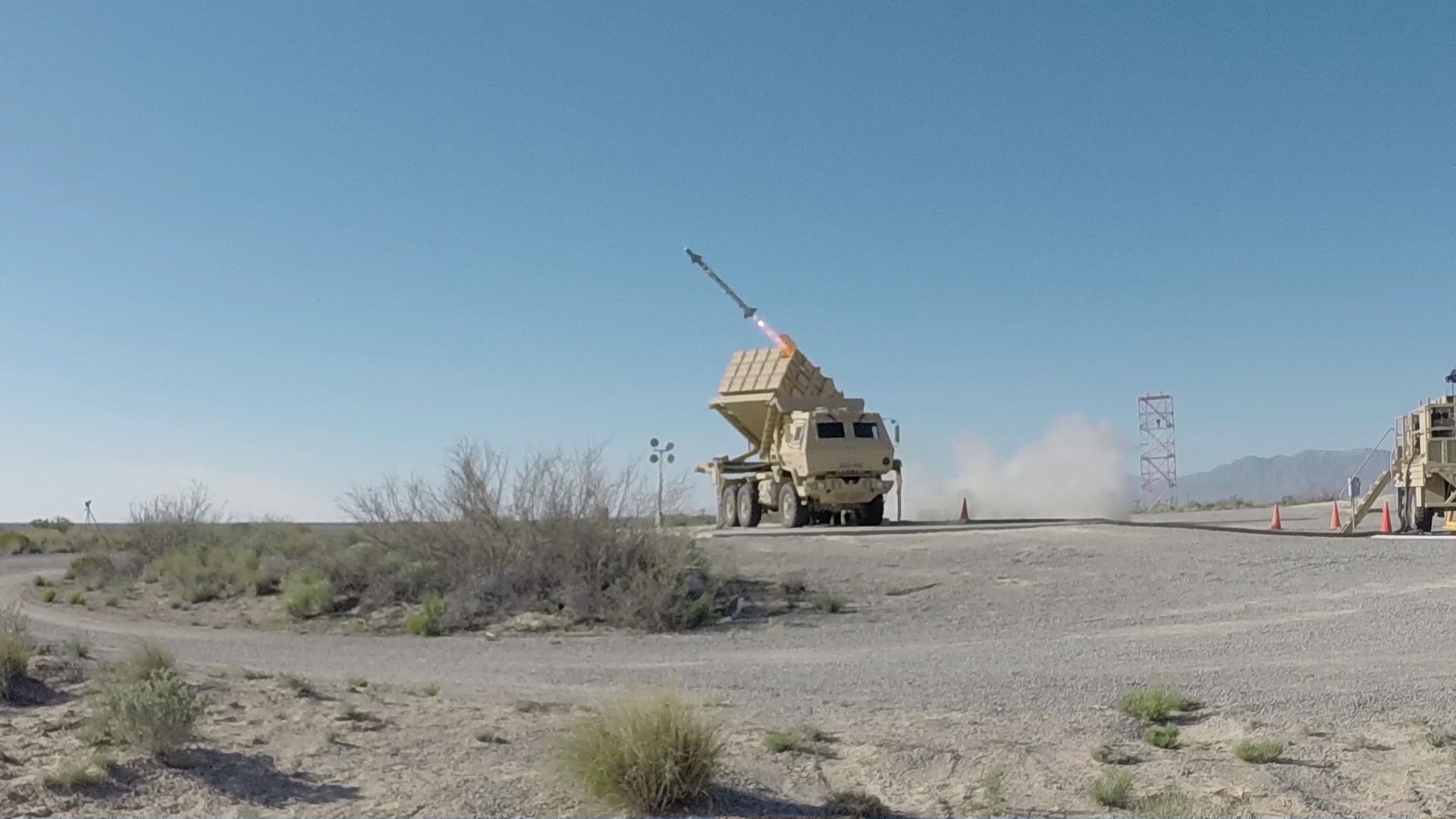Integration of the joint Navy and Air Force AIM-9X Sidewinder Air Intercept Missile with the Army’s Multi-Mission Launcher (MML) hit the mark as the teams completed a successful live-fire engineering demonstration at White Sands Missile Range, New Mexico, March 28-April 1.
During the Indirect Fire Protection Capability (IFPC) conceptual demonstration, missiles were launched from the MML, locked-on, and intercepted both an unmanned aerial vehicle and a cruise missile.
“Working closely with our industry partner and the Army, the PMA-259 team established a first-of-its-kind surface-to-air missile capability,” said Capt. Jim Stoneman, Air-to-Air Missiles (PMA-259) program manager. “We are thrilled with the outcome of the live-fire as it solidifies the repurpose of the missile for use in a surface-launch role. The demo is a testament to the fact that the missile and launcher integration will be an affordable game-changer in future wartime conflicts, and will greatly increase mission effectiveness against aerial adversaries.”
“The demo is a testament to the fact that the missile and launcher integration will be an affordable game-changer in future wartime conflicts, and will greatly increase mission effectiveness against aerial adversaries.”
The event scenarios validated the lethality of the AIM-9X Block II Sidewinder missile in the surface-to-air arena and against smaller target sets, adding to the weapon’s performance portfolio. Prior to the AIM-9X IFPC engineering demonstration, it was capable of being launched only from aircraft to include the Navy’s F/A-18 Hornet and Super Hornet, the Air Force’s F-15 Eagle and F-16 Fighting Falcon, and various international partner aircraft.
“These live fires are a major accomplishment and significant step forward for the Army’s IFPC program and the AIM-9X missile,” said Cmdr. Rob Betts, PMA-259 AIM-9X Block II and IFPC military lead. “The Army continues to make extraordinary strides in the development of their IFPC system, and the AIM-9X team is honored to support them. We look forward to continuing our relationship with the Army as they utilize the AIM-9X in more advanced surface-to-air scenarios.”
The AIM-9X air-intercept missile is 119 inches in length, weighs 186.2 pounds and serves to detect, acquire, intercept and destroy a wide range of high-performance airborne and surface threats.
The next step for the AIM-9X IFPC is a Milestone B decision scheduled for summer 2016 which signifies the end of the Technology Maturation and Risk Reduction phase. The IFPC program is expected to enter the Engineering and Manufacturing Development Phase shortly thereafter, and is scheduled to reach Initial Operating Capability early 2020.










